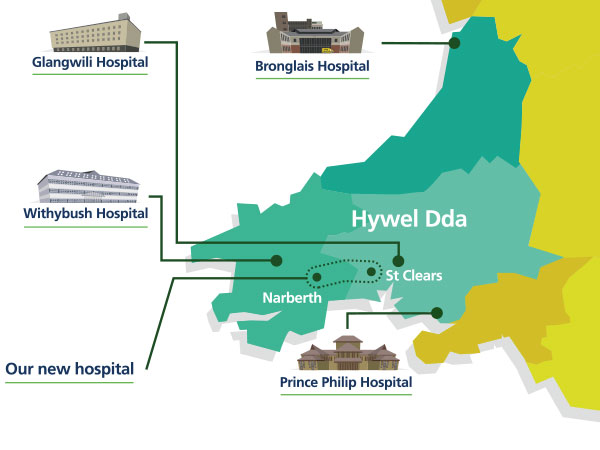
Currently we have four main (acute) hospitals:
• Bronglais Hospital, Aberystwyth
• Glangwili Hospital, Carmarthen
• Prince Philip Hospital, Llanelli
• Withybush Hospital, Haverfordwest
All four hospitals provide medical services. Bronglais, Glangwili and Withybush hospitals also have Emergency Departments, whilst Prince Philip Hospital has a GP-led Minor Injury Unit and Acute Medical Admissions Unit.